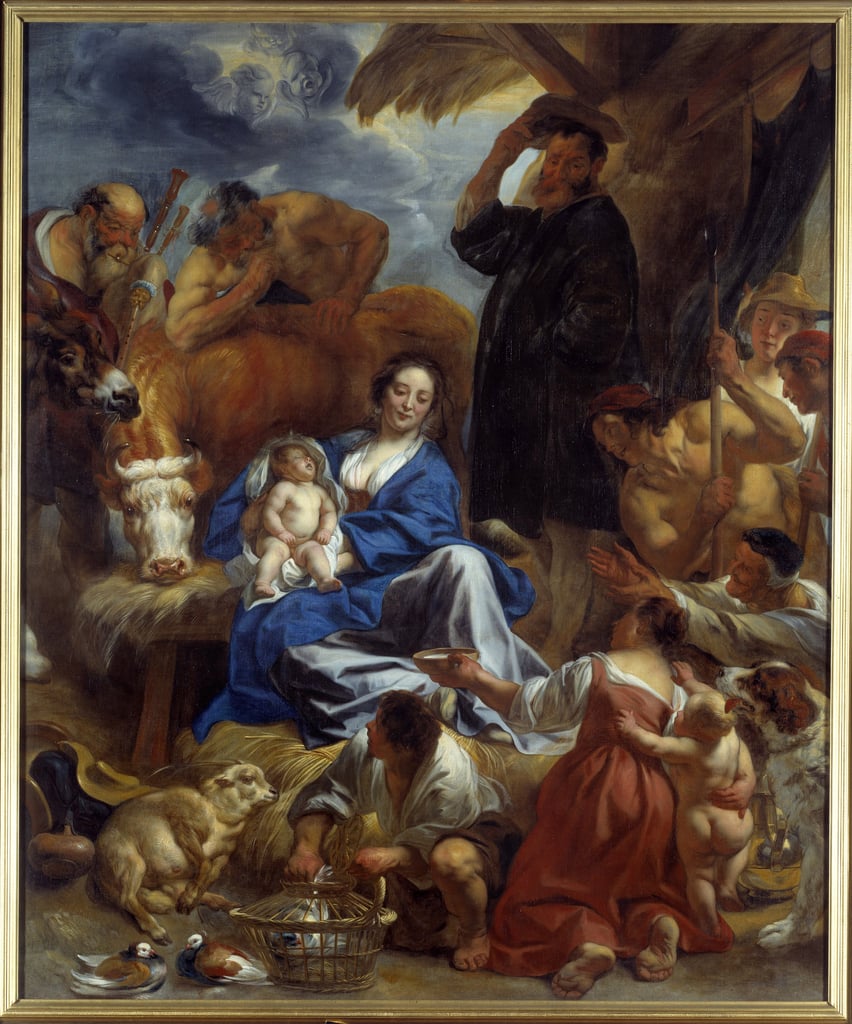The Adoration of the Shepherds

Flemish painter, draughtsman, and tapestry designer Jacques Jordaens (d. 1678) took his artistic talents to Bethlehem time after time, leaving us numerous images of the Holy Family in its earliest moments. A leading artist of the Flemish Baroque, Jordaens kept the dynamism and painterly qualities of the Baroque movement while infusing his art with a local realism, resulting in a style well suited to the Christmas theme.
Known for his “peasant genre,” Jordaens was less erudite than some of his contemporaries, and spent most of his life close to his birthplace rather than studying abroad. In this version of the Adoration of the Shepherds, chiaroscuro (Italian for “light-dark”) draws the eye to Mary and Christ, who is Light itself. The animals and shepherds are not fully obscured in shadow. Instead, these humble figures are portrayed with care, from the shepherd playing his pipe to the shepherdess offering the Virgin Mother a drink while semi-embracing her own young.
The liveliness of the scene reminds us that the shepherds had just come, in haste, from another place of awe and music. Even more, these first witnesses to the divine miracle, the lowest of the social class, remind us that Christ’s first and last lesson was humility. Pope Benedict VXII, another good shepherd, told his flock: “God’s sign is His humility. God’s sign is that He makes Himself small; He becomes a child; He lets us touch Him and He asks for our love” (Christmas homily 2009).
